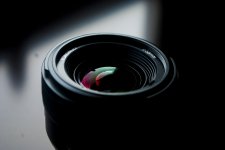Animal photography is a captivating genre that allows us to connect with the natural world and its incredible inhabitants. Whether you're photographing wildlife in their natural habitat or capturing the playful antics of your beloved pets, having the right lens can make a significant difference in the quality and impact of your images. In this blog, we will explore various lenses suited for animal photography, considering different scenarios and the subjects you wish to photograph.

Conclusion:
Selecting the right lens for animal photography depends on your specific goals, the type of animals you wish to capture, and the environment in which you'll be shooting. Zoom lenses provide versatility, telephoto lenses allow you to reach distant subjects, macro lenses reveal intricate details, wide-angle lenses showcase the environment, and prime lenses offer exceptional image quality. Understanding the capabilities of each lens type will help you make informed decisions when it comes to choosing the perfect lens for capturing the wild beauty of the animal kingdom. Remember to experiment, adapt, and always prioritize the welfare and safety of the animals you're photographing. Happy shooting!
(Note: Always research the compatibility of lenses with your specific camera brand and model before making a purchase.)
- The Versatile Zoom Lens:
- Telephoto Lens for Distant Subjects:
- Macro Lens for Close-ups:
- Wide-Angle Lens for Environmental Portraits:
- Prime Lenses for Exceptional Image Quality:
Conclusion:
Selecting the right lens for animal photography depends on your specific goals, the type of animals you wish to capture, and the environment in which you'll be shooting. Zoom lenses provide versatility, telephoto lenses allow you to reach distant subjects, macro lenses reveal intricate details, wide-angle lenses showcase the environment, and prime lenses offer exceptional image quality. Understanding the capabilities of each lens type will help you make informed decisions when it comes to choosing the perfect lens for capturing the wild beauty of the animal kingdom. Remember to experiment, adapt, and always prioritize the welfare and safety of the animals you're photographing. Happy shooting!
(Note: Always research the compatibility of lenses with your specific camera brand and model before making a purchase.)
